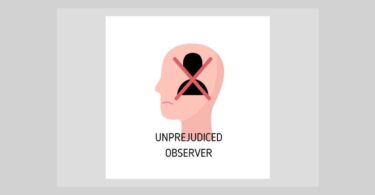Incalculably greater and more important than the two chronic miasms just named, however, is the chronic miasm of psora,
After introducing the venereal miasms which were more easily perceived as chronic expressions following infection in his day, Hahnemann next introduces his perception of Psora. To those in his time, it was probably the most ridiculous theory of disease ever propounded and yet he persisted with it, facing all the criticism and ridicule with courage. “Aude sapare“, he said. The ridicule and lack of acceptance was however, not only restricted to the allopaths, but also some homeopathic colleagues, many of whom had not fully understood or applied the law of similars.
Hahnemann considered Psora to be the most important of the three miasms, for various reasons which he begins to explain below. Let us see if we can follow his line of thought.
which, while those two reveal their specific internal dyscrasia, the one by the venereal chancre, the other by the cauliflower-like growths,
In Miasms I, I had explained the observations made by Hahnemann in The Chronic Diseases regarding the venereal maisms. He talks of the miasmatic change caused in the ENTIRE BEING BEFORE the external manifestation of disease, after the point of infection with the miasma. While these are easily attributable to specific organisms with common symptoms in almost all affected people, Psora too has such a miasmatic expression, but the expression and its subsequent development varies widely.
does also, after the completion of the internal infection of the whole organism, announce by a peculiar cutaneous eruption, sometimes consisting only of a few vesicles accompanied by intolerable voluptuous tickling itching (and a peculiar odor),
Psoric activity is initially observed by a cutaneous eruption often resembling vesicular rashes, but incredibly itchy. Most often, today an individual will not even remember such a history in their past or in childhood, as almost immediately an antihistaminic cream would have been applied, or an anti-allergic remedy given along with a soothing lotion. In Hahnemann’s day, Sulphur based applications were one of the commonest modes of treatment. This inevitably suppressed Psora into latency which quietly progressed into secondary and tertiary manifestations. These manifestations he has enumerated below:
the monstrous internal chronic miasm – the psora, the only real fundamental cause and producer of all the other numerous, I may say innumerable, forms of disease1, which, under the names of nervous debility, hysteria, hypochondriasis, mania, melancholia, imbecility, madness, epilepsy and convulsions of all sorts, softening of the bones (rachitis), scoliosis and cyphosis, caries, cancer, fungus nematodes, neoplasms, gout, haemorrhoids, jaundice, cyanosis, dropsy, amenorrhoea, haemorrhage from the stomach, nose, lungs, bladder and womb, of asthma and ulceration of the lungs, of impotence and barrenness, of megrim, deafness, cataract, amaurosis, urinary calculus, paralysis, defects of the senses and pains of thousands of kinds, etc., figure in systematic works on pathology as peculiar, independent diseases.
The secondary and tertiary expressions of Psora, range from the mind, to the brain, to the bones and includes cancer, asthma, hemorrhage, etc. Quite confusing isn’t it?
Subsequently, in the development of Hahnemann’s philosophical concept of miasms, HC Allen and his students which included TF Allen, re-organized the conditions and pathological expressions of secondary and tertiary psora; then relegating some of these expressions to Sycosis, Tubercle and Syphilis. The Dhawle’s (2003) school further understood the patho-physiology of the symptoms expression and re-classified the expressions of each miasm which can be read here: Miasms II.
Authors like Subrata Banerjee offer clear tabulation and classification of symptomatic expression without the patho-physiological explanation, found in his books on Miasms. Gina Tyler has written an article on Miasms, based on this tabulation and classification.
Appended to this aphorism is a lengthy footnote, numbered 77 in Boericke’s translation of the Organon. He explains here, how he began to conceive of his Miasm theory after serious reflection and observation that spanned 12 years, starting as early 1818. We will discuss this footnote further when elaborating on Aphorism 81 next month.
BIBLIOGRAPHY
1. Hahnemann, Samuel C, MD: (1896) The Chronic Diseases, Volume 1; Translation by Tafel, LH; BJain Publishers.
2. Hahnemann, Samuel C, MD: (1921) Organon of Medicine, 6th Edition; Translated by William Boericke, MD, BJain Publishers Ltd, Reprint edition 1986.
3. Allen, JH, MD; (1908) The Chronic Miasms – Volume I and II; B. Jain Publishers, India.
4. Boenninghausen, C von ;(1846) Boenninghausen’s Therapeutic Pocket Book, Part 1: Preface; 5th American Edition by Dr. T. F Allen
5. Boger, Dr. CM, MD; (1915) A Synoptic Key of the Materia Medica; Foreword, 5th Edition: B. Jain Publishers, India.
6. Boger, Dr. CM, MD; (1964) Studies in the Philosophy of Healing: 2nd Edition; B. Jain Publishers, India.
7. Das, Ashok Kumar: Treatise on the Organon of Medicine, B.Jain Publishers
8. Dhawle, ML (2003); ICR Symposium Volumes I,II,III; 2003 Edition
9. D’Souza, L (2006): Miasms in Case Management, Part 2: Disease Evolution and its Miasmatic Management, 3rd edition, 2006; URL: https://hpathy.com/organon-philosophy/miasms-in-case-management-ii/
Last accessed Sept 2007
10. Kent, James T, MD ; (1926) Lesser Writings – Part II; Editor W.W. Sherwood, p. 292-310; B. Jain Publishers, India, Reprint edition 1997
11. Kent, James T, MD; (1900) Lectures on Homeopathic Philosophy, B. Jain Publishers, India
12. Dudgeon RE, Boericke William; Organon of Medicine by Samuel Hahnemann, Fifth and Sixth Edition Combined.
13. Vijayakar, Dr. Prafull, LCEH; (2003), The End of Myasumption of Miasms
14. Banerjea, SK: Miasmatic Diagnosis (Notes from seminars).
15. Little, David: Case Management available on www.simillimum.com
at gement/aicr/article.php
Last accessed June 2007





